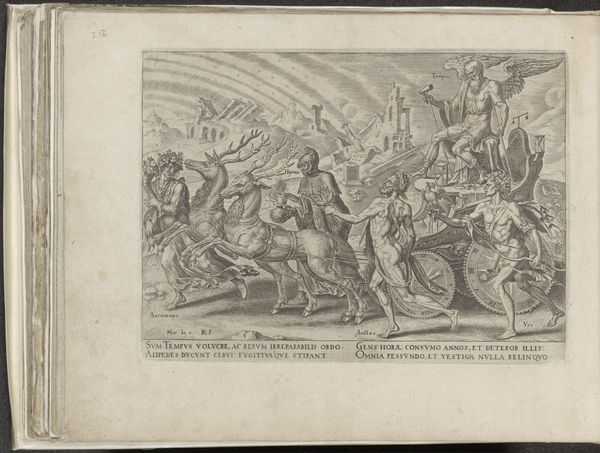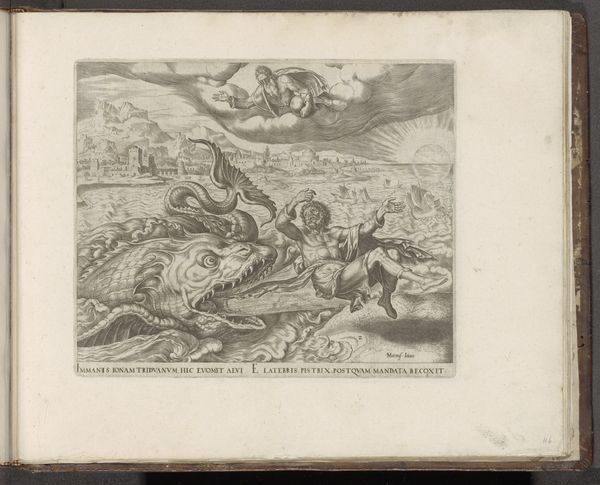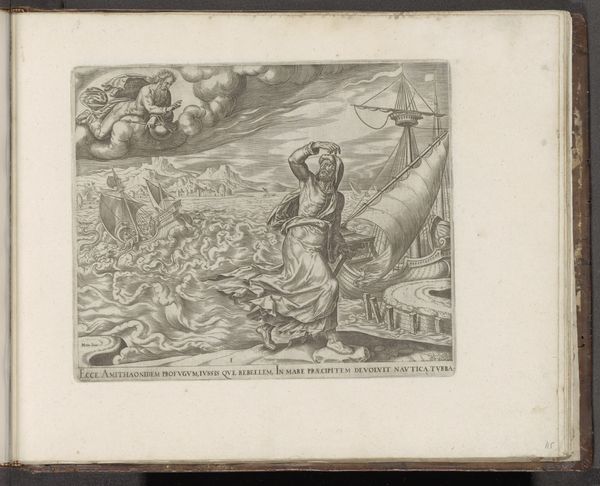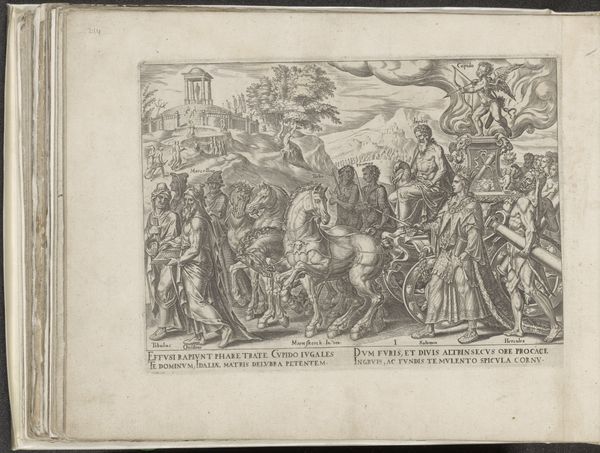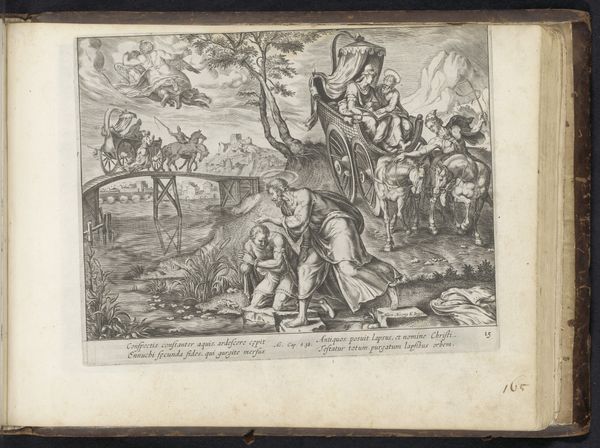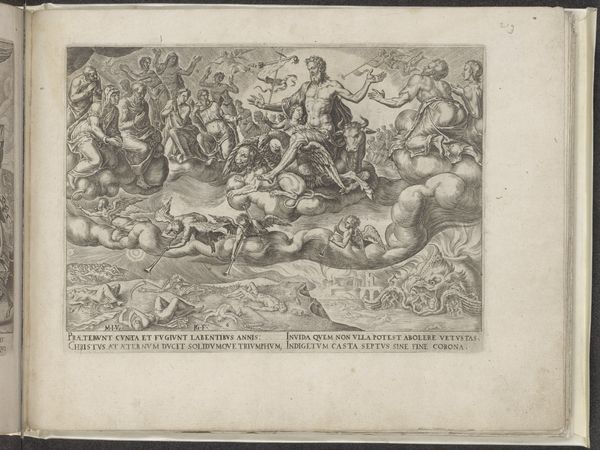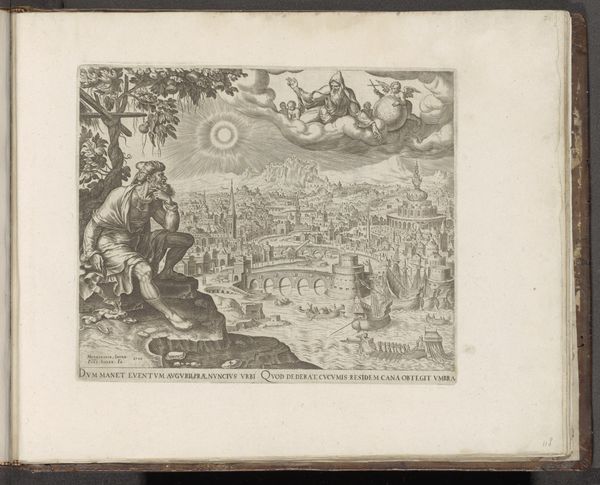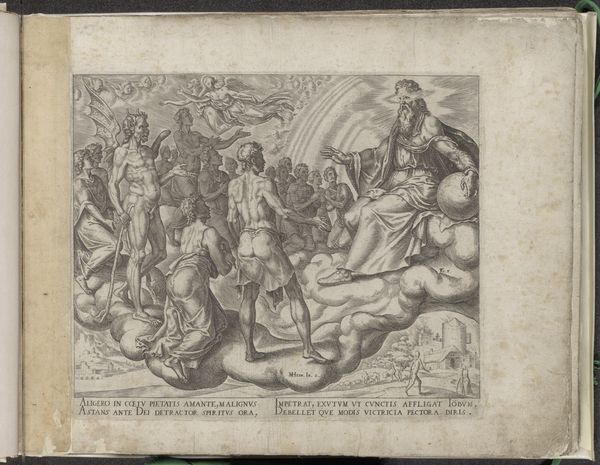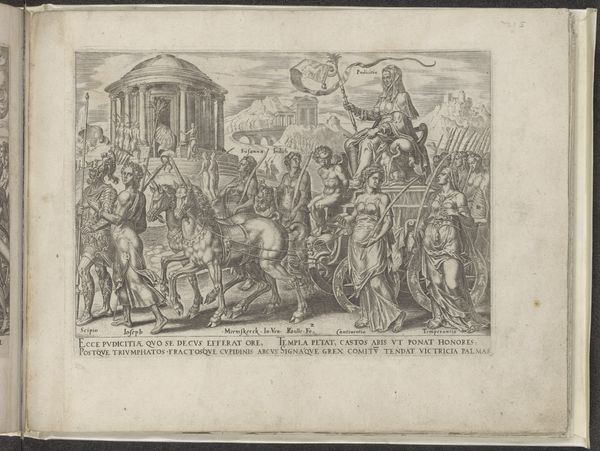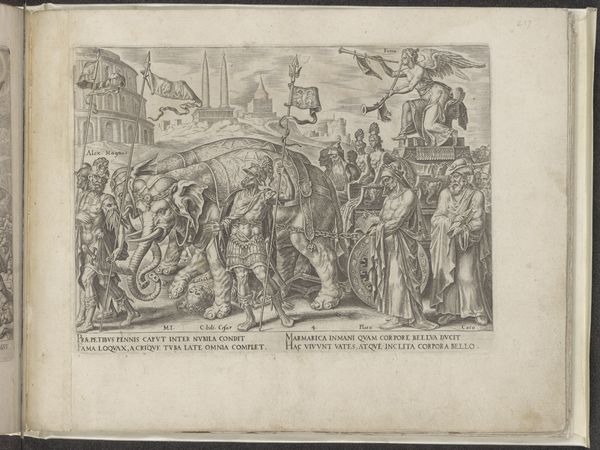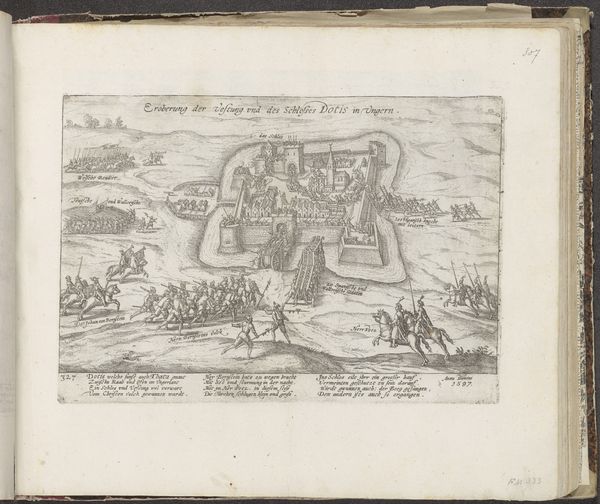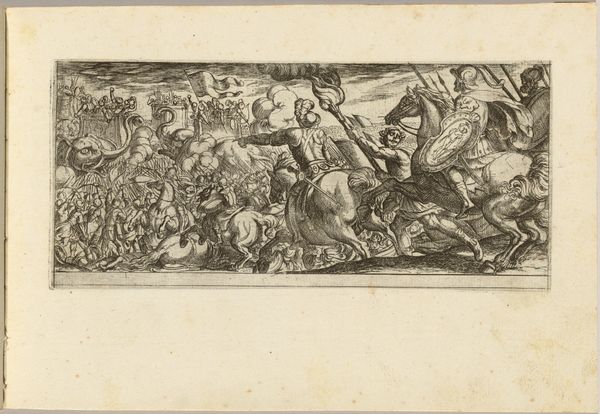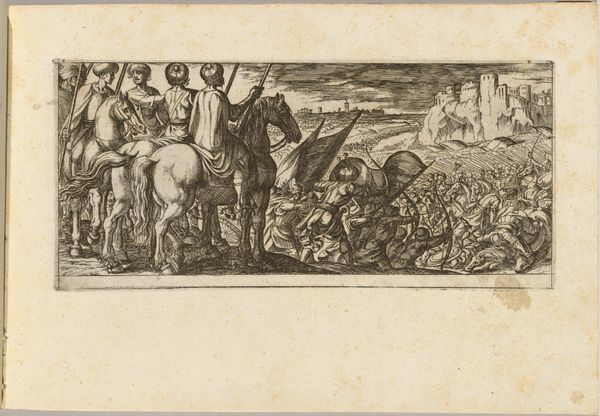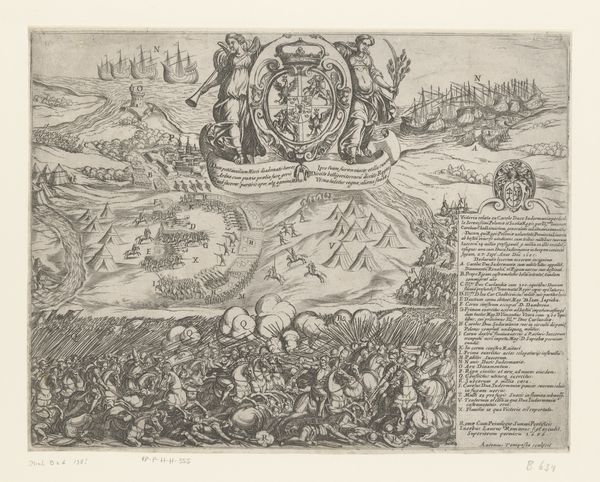
print, engraving
#
allegory
# print
#
sketch book
#
landscape
#
mannerism
#
figuration
#
vanitas
#
line
#
history-painting
#
northern-renaissance
#
engraving
Dimensions: height 192 mm, width 263 mm
Copyright: Rijks Museum: Open Domain
Philips Galle made this engraving, *The Triumph of Death*, in the late 16th century. It's a stark depiction of death's dominion, offering a commentary on the social anxieties of its time. The image is rich with symbolism. Death, enthroned on a chariot, is drawn by oxen, trampling over bodies. We see all social classes represented in the carnage. Galle's work evokes the widespread anxieties of disease, famine, and warfare that characterized 16th-century Europe. The scene may speak to the social and political upheavals of the Reformation, a time when traditional hierarchies were being challenged. To truly understand *The Triumph of Death*, we might turn to the historical record. Contemporary literature and religious tracts could shed light on the prevailing attitudes towards mortality. Prints like this were also commodities bought and sold, their value revealing much about the society that produced them. After all, art history isn't just about the art itself, but the world that shapes it.
Comments
No comments
Be the first to comment and join the conversation on the ultimate creative platform.
